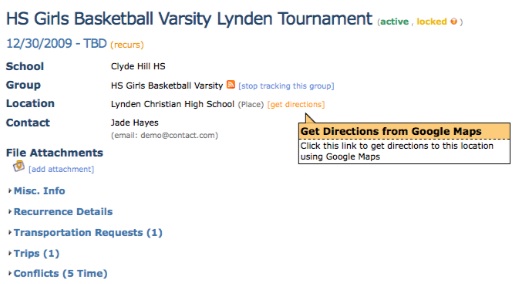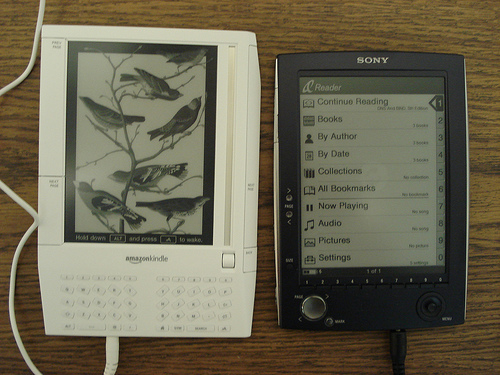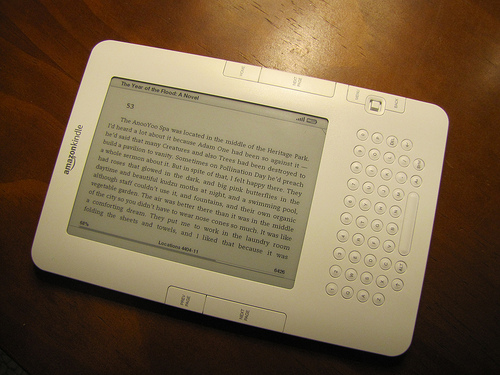One useful feature of Tandem’s school calendar is the ability to provide directions to school events which can be helpful to parents and students who attend events at other schools or other locations. The school administrator just has to enter the address once when they add new locations to the calendar, and the address information will automatically be available for any event at that location. When calendar users go to a specific event, they can click on “get directions” and they will be sent to Google Map of the location which will show the address of the location. From there the parent or student can get step by step directions to the event, or just write down the address to enter into their GPS device. Having this location information all in one place at the school’s calendar can prevent confusion and help the school better manage event logistics, so everyone is on the same page for team transportation, personnel, and equipment requirements.

The location management functionality of the Tandem calendar also helps school administration manage the high number of school facilities that are used by a lot of different school groups. Tandem automatically checks and alerts the calendar manager(s) of any scheduling conflicts in which two groups may want to use the same facility at the same time. Additionally, anyone can view all the events scheduled at a certain facility, so they know what times are available to request a new event. School administrators can also find out when their facilities will be vacant and offer outside groups to book a facility for a fee.
How To Get Free Digital Books for eBook Readers
The Barnes and Noble Nook Reader, Amazon.com ’s Kindle, and the Sony Daily Edition e-Reader have become valid options for providing books, magazines, and other printed materials to students in school libraries. The new technology behind modern day e-readers and their paper like reading screens currently makes the actual devices somewhat pricey.
’s Kindle, and the Sony Daily Edition e-Reader have become valid options for providing books, magazines, and other printed materials to students in school libraries. The new technology behind modern day e-readers and their paper like reading screens currently makes the actual devices somewhat pricey.
However, the savvy school librarian or teacher can help offset the price of the readers by mining the rich library of free materials that are available for download to the new generation of digital readers. Many of the classic books that are required reading for elementary, junior high, and high school students have public domain versions available for ready download into the e-Reader of choice, and they can be downloaded 100% free of charge.
Free eBooks for the Amazon.com Kindle e-Reader
A quick navigation to the Kindle store section of Amazon allows for an option to view all available Kindle titles. When this option is selected, a drop down menu is available that allows the eBooks to be sorted from price lowest to high which ends up revealing page after page of $0.00 books. Of particular interest to school librarians and teachers will be the reference selections, test prep books, and biography/memoirs of notable persons throughout history.
Free Books for the Sony Daily Edition e-Reader
The Sony Daily Edition e-Reader truly provides a large portion of the world of literature to school students. The public domain books that are available through Google Books can be downloaded to a PC desktop and then placed into Daily Edition. All of these books are free and invaluable. A quick browse through Google Books will bring up familiar favorites and obscure manuscripts that have been archived from university libraries. For students in high school who need multiple source materials for research papers, the Sony Daily Edition e-Reader can be a valuable and near instantaneous method of acquiring facts.
Free Books for the Barnes & Noble Nook e-Reader
Nook has only recently experienced its debut on the consumer market, but it has already made a splash. Along with Nook, Barnes & Noble created a desktop download e-Reader for storage of eBooks and allows “loaning” of books and files to friends through both this download and portable devices which can equate to easy sharing among students. Currently Barnes & Noble offers several free eBooks, including a reference dictionary and classics that are usually required reading in high school. More are sure to come as the device makes a larger impact on the e-Reader market.
All three of the current major e-Readers: Kindle, Sony, and Nook have a variety of free eBooks available for download. Many of these free eBooks are materials any school library can benefit from, and utilizing public domain no-cost versions of classics instead of paying for a contemporary download helps compensate for the price of the actual e-Reader.
Photo credit: http://www.flickr.com/photos/jblyberg/ / CC BY 2.0
Online Tools for Helping Students with Math
Since the first operating syste ms for a consumer PC included a calculator capable of basic functions like adding and subtracting, the student has had a means to work on math homework with a computer. In recent years, this capability has increased numerous times over with the ready availability of numerous online algebraic calculators able to solve complex functions and integrations as well as complete basic problems.
ms for a consumer PC included a calculator capable of basic functions like adding and subtracting, the student has had a means to work on math homework with a computer. In recent years, this capability has increased numerous times over with the ready availability of numerous online algebraic calculators able to solve complex functions and integrations as well as complete basic problems.
Math.com features several different calculators easily accessible on their web-site. The basic calculator features easy commands like addition, subtraction, multiplication, and division while the scientific version can handle exponents, sin, cos, and tan problems. The sites square root tool allows for the easy input of any number into the site provided entry box to have the square root immediately presented. A circle problem solver provides either the area, diameter, or circumference based on the information available. Prime number, quadratic equation, percent, probability, and savings calculators are also present on the site.
In addition to these calculators, Math.com also provides an extensive amount of math problem tutorials to help students learn concepts step by step. Numerous volume and area formulas are provided with diagrams illustrating the various parts of a shape, such as cones, pyramids, and cylinders. With so many areas to explore, Math.com is a one-stop site for elementary school students who need help with their math homework, and it contains the larger portion of information needed for high school math courses.
Mathway.com is another great math site currently available for education use. Instead of providing calculations with a traditional calculator in a virtual format, Mathway allows students to input a math problem into a search box and it provides the answer. You can also view the steps to solve the problem by paying for a premium membership. Mathway can help students in math classes from the basics to calculus, and teachers can access Mathway Classroom Edition BETA. The Mathway classroom edition will allow any educator to set-up an account to manage virtual help for their students when class is not in session.
PC calculators and web-based applications tailored to math teachers and students have come a long way in the past several years and manage to rival the best lower level scientific calculator which equates to a great savings for the budgets of both parents and classrooms if they are utilized in place of a physical calculator. When coupled with the detailed problem solving breakdowns also present online, any student can stay caught up or get ahead in math class with the world wide web.
Photo credit: http://www.flickr.com/photos/nicnolan/ / CC BY-ND 2.0
Why Schools Should Switch To Kindle E-Readers
 In October of 2009 USA today released an article discussing Cushing Academy in Massachusetts and the school library’s decision to rely upon the Amazon.com Kindle e-reader for almost all of their book circulation needs. While this is the first major coverage of an almost full conversion to digital readers for a school library, more and more school libraries have begun to utilize Kindle devices in some capacity.
In October of 2009 USA today released an article discussing Cushing Academy in Massachusetts and the school library’s decision to rely upon the Amazon.com Kindle e-reader for almost all of their book circulation needs. While this is the first major coverage of an almost full conversion to digital readers for a school library, more and more school libraries have begun to utilize Kindle devices in some capacity.
In many cases, one of the primary complaints of parents, teachers, and librarians not in favor of the Kindle being implemented in school libraries is that it is a somewhat expensive device with an average price tag of approximately $260-$470 depending on the model purchased. While this may seem like an inordinately huge price tag for an educational library to pay for a new piece of equipment, it is important to consider other variables.
One new hardcover book, in particular a non-fiction title, is usually going to cost a school library $20-$30 if a standard hardcover is purchased. Should a library edition of available titles be purchased, the cost increases. Almost all new books and bestsellers cost only $9.99 on the kindle, which equates to a $10 to $20 savings per book. A school library that purchases 20 books in a month will instantly pocket the cost of a Kindle unit in savings and will only have to purchase the book once to have it instantly available in the library’s kindle account.
An added bonus that comes with switching over to a Kindle based library is that it does not have to be limited purely to the number of handheld devices owned by the school or school system. Kindle now has a reader for PCs and a Kindle reader application for iPhones and the iPod Touch. Each of these applications allows a Kindle owner the ability to read a book in their Kindle account when they do not have access to their Kindle unit.
Any notes or highlighted sections will automatically synchronize and be visible on the PC and/or iPhone screen. This option could be particularly useful in literature classes where book selections are read both independently and in the classroom. A student who takes notes on a school library provided Kindle device during class can access those same notes at home on their PC in preparation for a test. Future upgrades to the Kindle and iPhone readers aim to allow the addition of notes to the PC and iPhone books as well.
As Kindle technology continues to develop, it will surely offer many more features targeted towards school and public libraries. Whether it is a full or partial implementation, e-readers should have a place in any technologically advanced educational system and the individual school libraries within them.
Image by http://www.flickr.com/photos/jcwestbrook/ / CC BY-ND 2.0
Applications Of Wikis In The Classroom
There are few students with access to computers who have not utilized a Wiki in o ne form or another. Wikipedia.org’s editable encyclopedia has become a go to source for millions of people looking for quick and current information on a variety of topics while other Wiki applications such as Wetpaint and MediaWiki have opened up the doors for even more community input and creation within the Wiki universe.
ne form or another. Wikipedia.org’s editable encyclopedia has become a go to source for millions of people looking for quick and current information on a variety of topics while other Wiki applications such as Wetpaint and MediaWiki have opened up the doors for even more community input and creation within the Wiki universe.
When it comes to education, Wikipedia.org can be an invaluable tool for a student. While many teachers and schools do not accept Wikipedia as a valid source for school papers or reports due to its editable nature, many Wikipedia pages contain an extensive source or footnotes section of their own which contains links to the URLs where the initial reporting or information can be found. A student doing a research paper on the President or a movie star can use the Wikipedia page as a starting point to fan out to other resources that are easily attributed and 100% school approved.
Wiki technology can also be found at Wetpaint.com which is a website that allows anyone to create their own editable wikis around a topic. Wetpaint provides a domain and the tools needed to have the equivalent of a virtual bulletin board for a classroom. Since these wikis can be adjusted to a private setting that allows access by invitation only, they are a safe way for students to mingle and discuss class relevant topics when away from school.
Pictures and files can be uploaded to Wetpaint, and videos from YouTube can be embedded within a page, making the wikis created on Wetpaint.com perfect for classes that require a lot of visuals such as art, history, and science! The Wetpaint site is also a very good venue for classes with numerous examples of printouts or take home materials such as vocabulary lists or worksheets. These materials can be uploaded to the class site, and then accessed by the student from home.
For schools that have the required servers for operating MediaWiki, an even more advanced option for content creation exists. MediaWiki is a free software application that allows users to create a full Wiki that will greatly resemble Wikipedia.org and the MediaWiki site in terms of appearance and user driven editing. Secondary schools with more advanced computer courses could even consider a collaborative venture on a MediaWiki to be a group or class wide project during a term. A school with a rich history and several different departments may also wish to create a school specific Wiki.
As the demands of providing a well-rounded education increase, so will the capabilities and reach of Wikis. Considering the lack of cost involved in accessing these materials coupled with the benefits they provide to educators and students, Wiki technology can be a perfect fit for many classrooms.